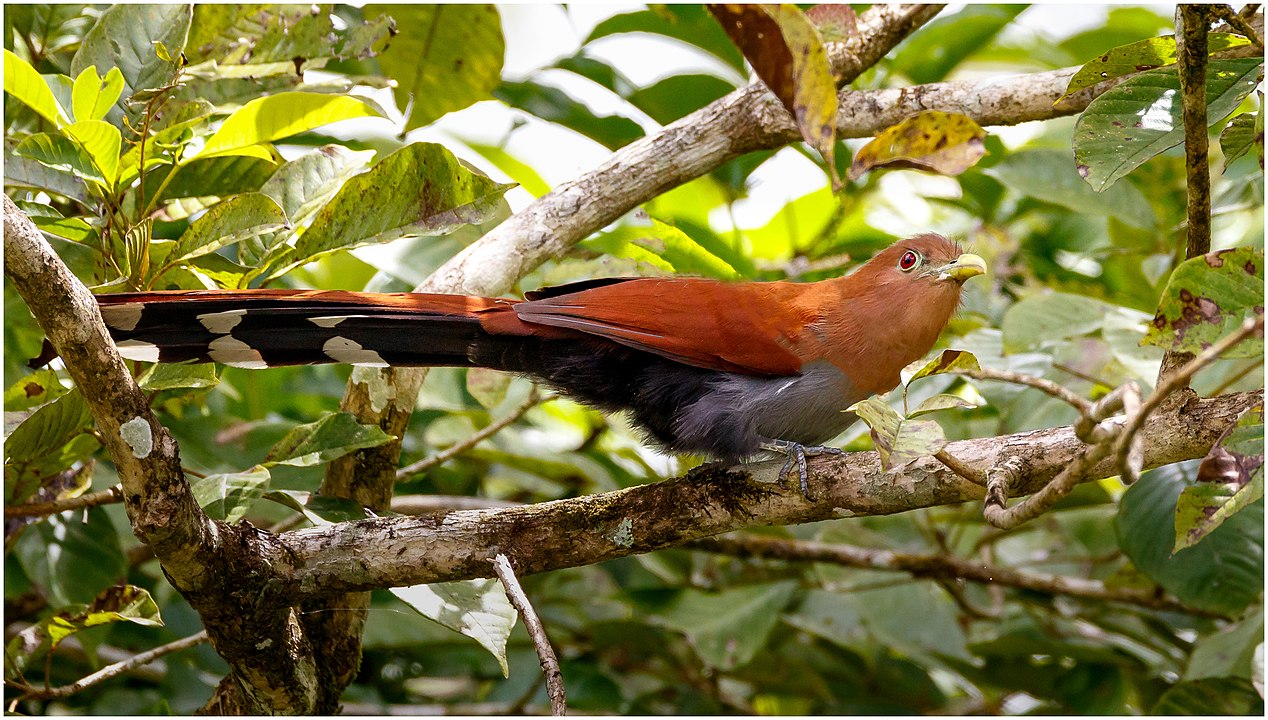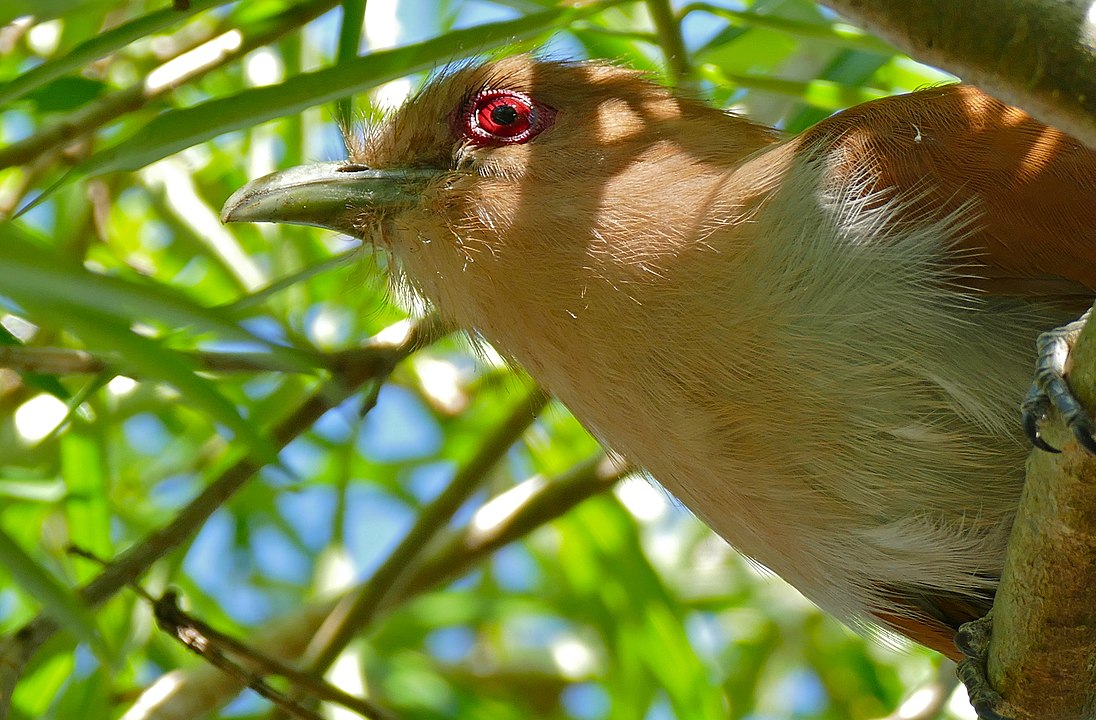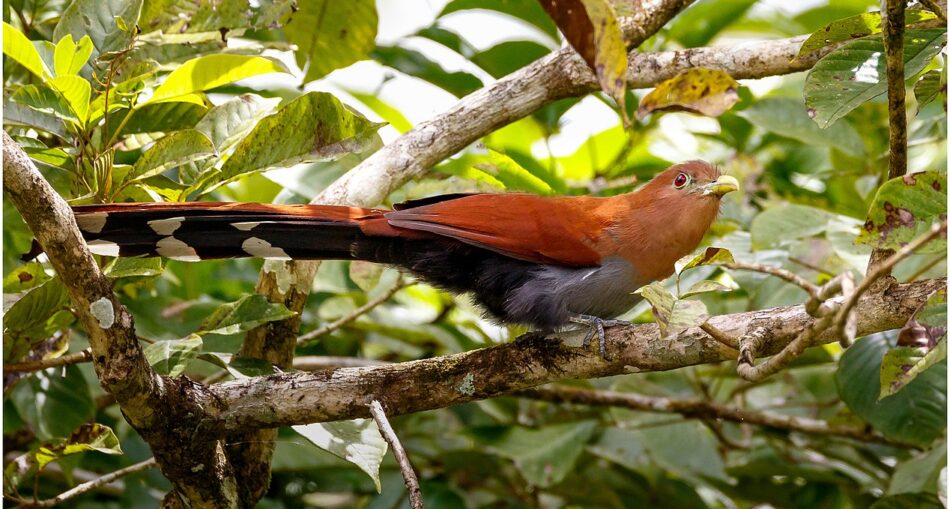Squirrel Cuckoos are lovers of wooded habitats with peculiar habits. The bird was dubbed the Squirrel Cuckoos because it has a habit of leaping from branch to branch with great speed, just like the squirrel. Additionally, it flies relatively short distances by gliding with few flaps of their wings. The bird resembles the little cuckoo but is smaller with a darker throat.
The Squirrel Cuckoo is native to Guyana, Trinidad, Argentina, Uruguay, and northwest of Mexico, and is found in abundance in these countries. While the scientific name of the Squirrel Cuckoo is Piaya cayana, the Squirrel Cuckoo in Mexico is sometimes referred to another species, the Mexican squirrel-cuckoo (Piaya Mexicana). However, there are said to be a whopping number of fourteen (14) subspecies of the Squirrel Cuckoo (Piyana cayana). These include the Piaya cayana cabanisi, Piaya cayana cayana, Piaya cayana circe, Piaya cayana hellmayri, Piaya cayana insulana, Piaya cayana macroura, Piaya cayana mehleri, Piaya cayana mesura, Piaya cayana mogenseni, Piaya cayana nigricrissa, Piaya cayana obscure, Piaya cayana pallescens, and Piaya cayana thermophila. These subspecies all share a similar brown plumage with small amounts of difference.

The Squirrel Cuckoo – Photo By Gerry Zambonini – Squirrel Cuckoo, CC BY-SA 2.0, https://commons.wikimedia.org/w/index.php?curid=77308243
Description Of The Squirrel Cuckoo
The Squirrel Cuckoo is a bold and bodacious bird with an exceptionally long tail. The bird is usually forty to fifty (40-50) cm long with a weight of anywhere from ninety-five to one hundred and twenty (95-120) grams. The upper-parts and head of the adults are predominantly chestnut in colour, gradually lightening at the throat. Lower breasts are grey, while the belly is dark or blackish in colour. Its central tail feathers are rufous and outer feathers are black, lined with white tips. The adult Squirrel Cuckoo has a yellow bill but immature birds have grey bills. Their irises are red while younger birds have a brown iris, with less white in their tails.

The Squirrel Cuckoo – Photo By Bernard DUPONT from FRANCE – Squirrel Cuckoo (Piaya cayana), CC BY-SA 2.0, https://commons.wikimedia.org/w/index.php?curid=51043829
Scientific Classification Of The Squirrel Cuckoo
- Domain: Eukaryota
- Kingdom: Animalia
- Phylum: Chordata
- Class: Aves
- Order: Cuculiformes
- Family: Cuculidae
- Genus: Piaya
- Species: P. cayana
Habitat Of The Squirrel Cuckoo
The typical habitats of the Squirrel Cuckoo are wooded areas like woodland canopies, edges, hedges and semi-open habitats with sea levels up to eight thousand and two hundred (8,200) feet. This particular species of cuckoos generally tolerate human disturbance given they do not disturb the wooded areas.
Diet Of The Squirrel Cuckoo
While the diet of the Squirrel Cuckoo mainly consists of large insects like wasps, caterpillars, cicadas, it sometimes feeds on small lizards, spiders, and on rare occasions, fruit. These birds lunge quickly at non-moving prey but can snap at wasps in the air. During the dry season, the bird sometimes forages without trouble with small mammals for cocoa beans. Sometimes they even join feeding flocks of mixed-species.
Reproduction Of The Squirrel Cuckoo
The breeding season of the Squirrel Cuckoos vary but some are able to breed during the rainy season. Squirrel Cuckoos built their nests on a twig foundation, with leaves forming a cup. Their nests are often hard to find since they are usually hidden in condensed vegetation, around thirty-nine (39) feet off the ground. In most cases, one to three (1-3) white eggs are laid. The hatchlings are fledged before they gain the ability to fly.
About The Squirrel Cuckoo
The Squirrel Cuckoo is a striking bird with peculiar moving habits similar to squirrels. Native to Guyana, the birds prefer woodlands and can often be found lurking in the vegetation. Its piercing red iris and lovely brown-hued plumage are sure to captivate.
Article Reference
- https://www.kaieteurnewsonline.com/2017/02/05/squirrel-cuckoo-piaya-cayana-2/
- https://animaldiversity.org/accounts/Piaya_cayana/classification/
- https://en.wikipedia.org/wiki/Squirrel_cuckoo
- https://avibase.bsc-eoc.org/checklist.jsp?region=GY
- https://bioone.org/journals/bulletin-of-the-british-ornithologists-club/volume-138/issue-3/bboc.v138i3.2018.a4/Nesting-biology-of-Squirrel-Cuckoo-Piaya-cayana-at-two-localities/10.25226/bboc.v138i3.2018.a4.full
- http://www.oiseaux-birds.com/card-squirrel-cuckoo.html#:~:text=DESCRIPTION%3A,plumage%20and%20its%20long%20tail.&text=Long%20dark%20chestnut%20tail%20is,and%20throat%20are%20pale%20reddish.







